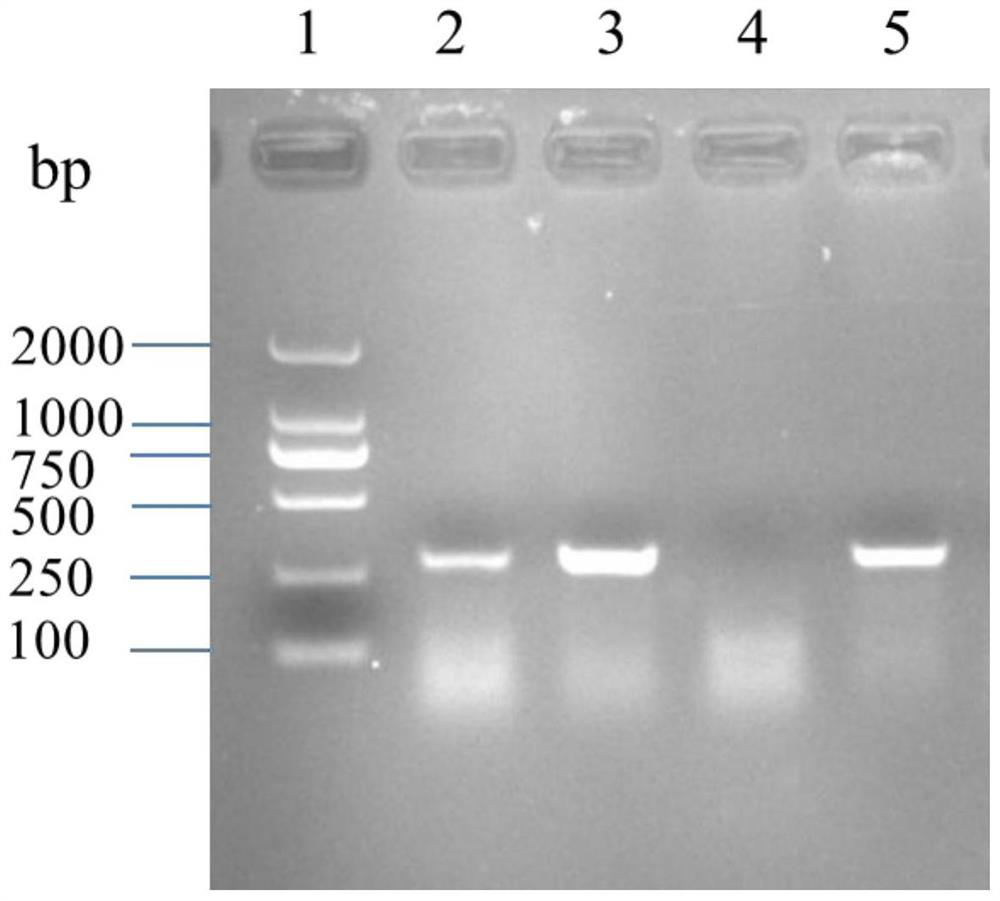Low pathogenic porcine reproductive and respiratory syndrome virus, vaccine and its application
A respiratory syndrome, low pathogenic technology, applied in the direction of antiviral agents, viruses/phages, viral antigen components, etc., can solve the problem of decreased vaccine protection, and achieve the effect of a good immune response
- Summary
- Abstract
- Description
- Claims
- Application Information
AI Technical Summary
Problems solved by technology
Method used
Image
Examples
Embodiment 1
[0024] Example 1 Isolation and identification of PRRS virus
[0025] 1. Isolation of porcine reproductive and respiratory syndrome virus
[0026] The pig lung samples sent by the Hebei pig farm for inspection were ground and tested by RT-PCR method, and the result was positive for porcine reproductive and respiratory syndrome virus.
[0027] Take an appropriate amount of the lungs for inspection and grind them. The grinding solution is PBS and added in a ratio of 1:5 (weight: volume). The ground material was repeatedly frozen and thawed three times, centrifuged at 12000 r / min for 10 min at low temperature, and the supernatant was collected and filtered through a 0.22 μm filter membrane.
[0028] Inoculate overgrown Marc-145 cells according to conventional methods (wash three times with PBS of pH 7.4 before inoculation), inoculate virus at a ratio of 10%, absorb at 37°C for 30 minutes, supplement cell maintenance solution, and incubate at 37°C. Observe daily for CPE. At the ...
Embodiment 2
[0037] Plaque purification of embodiment 2 PRRS virus
[0038] Take the 4th generation virus of PRRSV HB2014001 strain and carry out 10-fold ratio dilution with 2% DMEM culture medium, and the dilution ratio is 10 -1 to 10 -8 , take 10 -3 to 10 -8 Add 500 μl of the dilution solution into a 6-well cell plate full of MARC-145 cells, incubate in a 37°C incubator for 1 hour, discard the virus solution, wash once with PBS, and add 4 ml of 1% low-melting point agar Cover the cells with sugar, put the agarose into the cell incubator after cooling, and culture at 37°C for 3-5 days. When obvious plaques are formed, pick the monoclonal plaques and inoculate them into the overgrown monolayer of MARC-145 cells for expansion. complex. The amplified virus was again subjected to two rounds of plaque purification as described above. After three rounds of plaque purification, the HB2014001 strain was expanded and cultured with MARC-145 cells, and stored at -80°C after aliquoting.
Embodiment 3
[0039] Example 3 Animal pathogenicity test of PRRSV HB2014001 strain
[0040] 1. Animal pathogenicity test of PRRSV HB2014001 strain
[0041] Six 4-week-old piglets with double-negative PRRSV antigen and antibody were screened and randomly divided into two groups. One group received intramuscular injection of 1 ml at the back of the neck for a total of 10 piglets. 5 TCID 50 Virus solution, another group of piglets were injected with 1 ml of 2% MDEM culture solution at the same site as a control.
[0042] After challenge, the experimental pigs were checked for clinical symptoms and rectal body temperature every day. The results of body temperature monitoring showed that before and after the challenge, the body temperature of the piglets in the control group fluctuated within the normal range; the body temperature of the piglets began to rise slightly on the second day after being inoculated with the PRRSV HB2014001 strain, and the body temperature all rose to about 40°C, wit...
PUM
 Login to View More
Login to View More Abstract
Description
Claims
Application Information
 Login to View More
Login to View More - R&D
- Intellectual Property
- Life Sciences
- Materials
- Tech Scout
- Unparalleled Data Quality
- Higher Quality Content
- 60% Fewer Hallucinations
Browse by: Latest US Patents, China's latest patents, Technical Efficacy Thesaurus, Application Domain, Technology Topic, Popular Technical Reports.
© 2025 PatSnap. All rights reserved.Legal|Privacy policy|Modern Slavery Act Transparency Statement|Sitemap|About US| Contact US: help@patsnap.com



